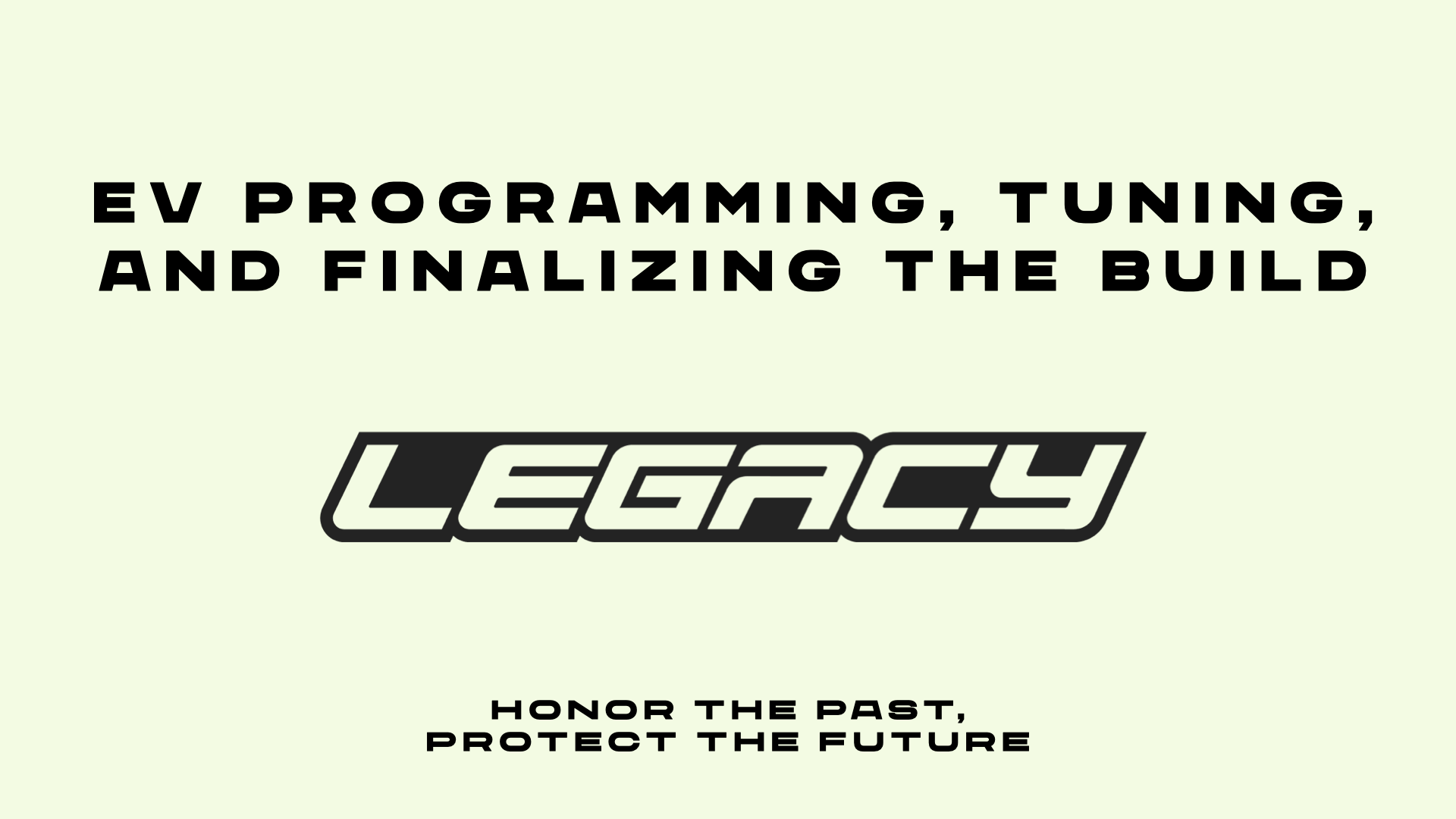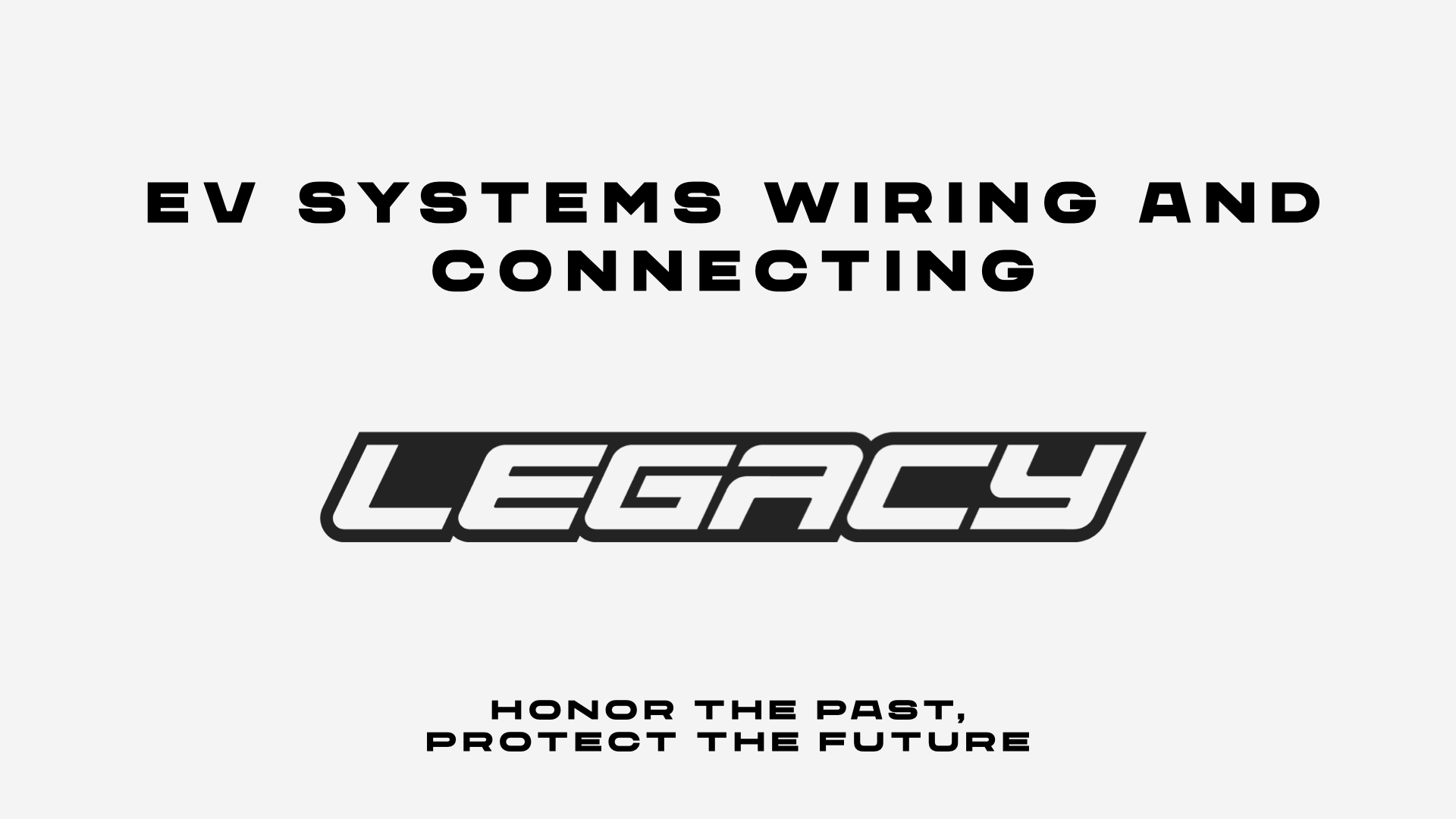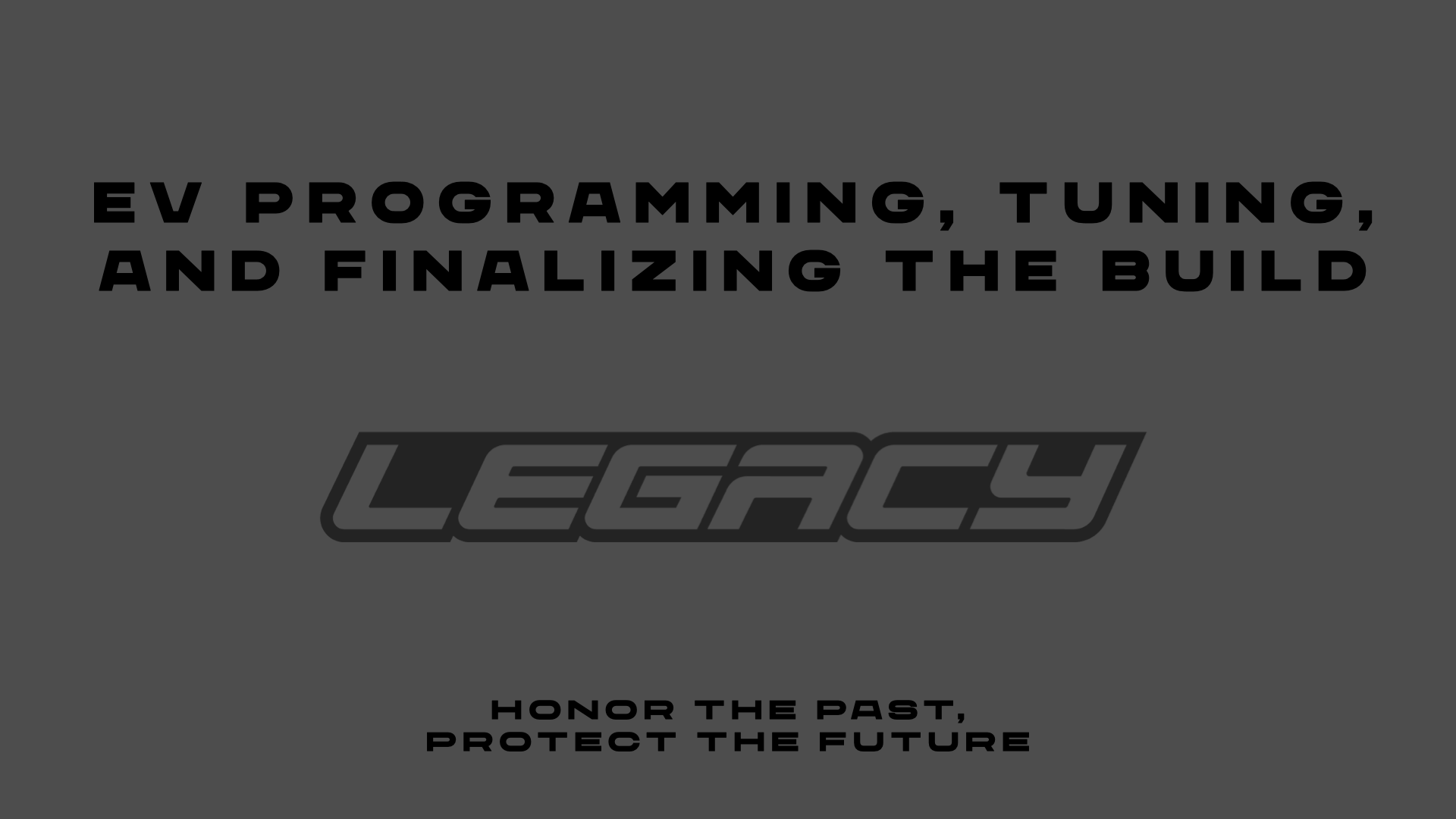Export = Completion Tracking
Available courses
Export = Quiz Completion Tracking
By this point in Legacy EV’s certified technician program you have learned about the best ways to mount and fit your EV system into the vehicle's frame and body, you have covered how to connect all EV systems together, and how to do all of this safely. Now it is time to program and tune your build to meet the specific needs of your unique build.
Due to the nature of an EV being an electronic system, it is likely far more programmable and customizable than the original combustion engine vehicle you started with. For example EVs have programmable torque curves, they can have different modes programmed and accessible in the cab by the flip of a switch, and they can even have programmable modes to allow for single pedal driving.
If you are a seasoned builder with experience with combustion engines, this may be the newest aspect of building an EV for you to learn. Programming your EV will require having access to a properly specced computer, proper software, and the programming manual included with your VCU, BMS, and/or MCU system.

At this point we have covered an introductory overview of EV systems, safety measures when working with EVs, mount fitment and fabrication of components, and now we will cover how to physically mount the systems and begin wiring them together.
Since you have already planned out mounting locations for all the systems, now you need to plan out how you will place the components into the vehicle, how you want to route your wires, and how to connect everything. In this chapter we will cover what you need to know before physically mounting the systems and connecting them, we will look at wiring diagrams and discuss how they translate into actual application on a vehicle. Additionally, we will cover best practices for wiring and connecting EV systems, as well as how to connect each system.

By this point, you have already chosen a kit and you understand the basic safety procedures involved with building an EV. Now you need to craft your plan on how to mount and connect all of the components. Since you have already connected the major systems outside of the vehicle, this portion will be fairly straightforward. However, there are a few things that you should consider before committing to any of your mounting locations.

In this chapter, we will cover basic safety measures for working with EVs, general safety tips, common electrical faults, bench testing your EV system, workstation prep, and ICE removal.
Although this course provides an introduction to building EVs, there is a certain level of basic electrical knowledge that is necessary in order to safely and successfully navigate the high voltage systems you will be working with in this course. If you have worked with low voltage systems or with electronics, your understanding of electrical systems should provide sufficient background knowledge to help you understand the new concepts regarding high voltages systems covered in this course. If you do not feel comfortable working with low voltage systems and basic electronics - please visit the supplemental source in this course, in order to better prepare you for the content that will be covered in this course.
The focus of this course is to prepare you with the necessary safety tools and information to build your own EV successfully. As always, this is not an all inclusive guarantee of safety. However, our team can share what we have learned and how we keep ourselves safe while building EVs in order to better prepare your team for the same. In this chapter, we will cover:
General and specific safety measures for working on Legacy EV kits.
Kit connections and set up, including how to prepare your bench test.
How to prepare your vehicle for the Legacy EV kit, including identifying which components should be removed and which should stay.
How to prepare your workstation for the build so it goes as smoothly as possible.

Legacy's Electric Vehicle Overview is the first course in Legacy EV's Certified technician course. In this course from Legacy EV we will cover what you need to know about EVs before we dive into wiring, mounting, and assembling your EV project. This includes a brief history of EVs, EV systems vs. ICE Car systems, what you need to know about Driving an EV, how to choose an EV kit, EV Motor (and controllers), EV Batteries (and management), and EV Chargers (and DC to DC converters). In the next chapter we will cover basic safety measures for building an EV and begin bench testing your new EV system.

